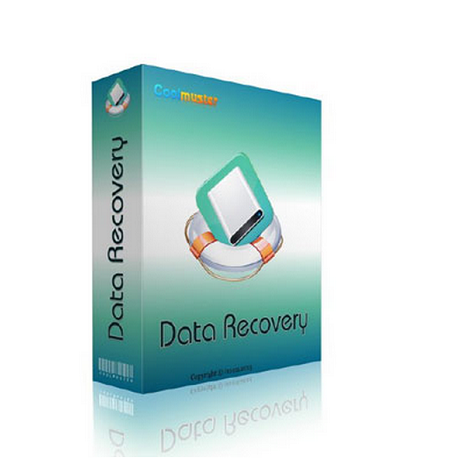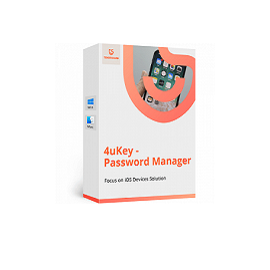Download SDRecovery 2 full version program free setup for Windows. SDRecovery is a tool designed to help you restore data from a broken or erased SD card. Once you find out the data is gone, the best approach would be to stop using the card and use the tool to try to recover it.
SDRecovery Overview
SDRecovery, short for Software-Defined Recovery, is a cutting-edge approach to data restoration and system resilience in the realm of information technology. At its core, SDRecovery is a method that leverages software-defined principles to manage and optimize the recovery processes of an organization’s IT infrastructure. Unlike traditional recovery methods that rely heavily on hardware-based solutions, SDRecovery emphasizes the use of virtualization, automation, and abstraction to enhance the efficiency and flexibility of data recovery. One of the key features of SDRecovery is its ability to create virtualized replicas of critical systems and data, ensuring that organizations can swiftly recover from any disruptions or disasters. This virtualization process allows for the creation of snapshots and backups that can be easily managed and orchestrated through a centralized software interface. The automation aspect of SDRecovery streamlines the recovery process by minimizing manual intervention, thereby reducing the risk of human error and accelerating the overall recovery time.

Furthermore, SDRecovery operates on the principle of abstraction, separating the logical view of data and applications from the underlying physical infrastructure. This abstraction layer enables organizations to recover their systems seamlessly across different hardware environments, promoting agility and adaptability in the face of evolving technology landscapes. It also facilitates the implementation of policy-based recovery strategies, allowing organizations to prioritize critical applications and data for faster restoration. In addition to its technical advantages, SDRecovery contributes to improved cost-effectiveness by minimizing the reliance on specialized hardware for recovery purposes. The software-centric nature of SDRecovery reduces the need for redundant physical infrastructure, leading to more economical resource utilization.
Overall, SDRecovery represents a paradigm shift in the field of data recovery, offering organizations a modern, adaptable, and efficient solution to safeguard their digital assets in an ever-changing technological landscape. The integration of virtualization, automation, and abstraction principles positions SDRecovery as a forward-thinking strategy for organizations aiming to enhance their resilience and ensure continuous operations in the face of unforeseen disruptions.
Features
- Virtualized Replication: SDRecovery utilizes virtualization to create replicas of critical systems and data, ensuring redundancy for quick recovery.
- Automated Snapshots: The system generates automated snapshots of data, reducing the need for manual intervention and minimizing the risk of errors.
- Centralized Management Interface: SDRecovery provides a centralized software interface for managing and orchestrating recovery processes.
- Abstraction Layer: The abstraction layer separates the logical view of data and applications from the underlying physical infrastructure, enhancing flexibility.
- Policy-Based Recovery: Organizations can implement recovery strategies based on predefined policies, prioritizing critical applications for faster restoration.
- Hardware-Agnostic Recovery: Abstraction allows for recovery across different hardware environments, promoting adaptability and reducing dependence on specific hardware.
- Agile Recovery: SDRecovery’s agility enables organizations to swiftly adapt to evolving technology landscapes and changing business requirements.
- Cost-Effective Solutions: The software-centric approach reduces the need for specialized hardware, contributing to more economical resource utilization.
- Real-time Monitoring: SDRecovery provides real-time monitoring of the recovery process, offering insights into performance and potential issues.
- Distributed Recovery Points: Replicated data can be distributed across various locations, ensuring geographical diversity for enhanced data protection.
- Incremental Backups: SDRecovery supports incremental backups, minimizing the amount of data transferred and optimizing storage usage.
- Multi-Cloud Compatibility: The system is designed to work seamlessly across different cloud providers, offering flexibility in data storage and recovery.
- Quick Rollback: In the event of an issue, SDRecovery allows for quick rollback to a previous stable state, minimizing downtime.
- Application-Consistent Backups: Ensures that backups are synchronized with application states, ensuring data consistency during recovery.
- Granular Recovery: Enables the restoration of individual files or components rather than the entire system, reducing recovery time and resources.
- Encryption and Security Measures: SDRecovery includes robust encryption and security features to safeguard replicated data during the recovery process.
- User-Friendly Interface: The interface is designed to be user-friendly, simplifying the management and monitoring of recovery operations.
- Role-Based Access Control: Implements role-based access control to restrict access to critical recovery functions, enhancing security.
- Comprehensive Reporting: Provides detailed reports on recovery processes, aiding in performance analysis and optimization.
- Dynamic Resource Allocation: Optimizes resource allocation during recovery, ensuring efficient utilization of computing and storage resources.
- Customizable Recovery Plans: Organizations can tailor recovery plans to align with specific business needs and compliance requirements.
- Failover and Failback Capabilities: SDRecovery supports seamless failover to backup systems and subsequent failback to the primary infrastructure.
- Integration with IT Service Management (ITSM) Tools: Integrates with ITSM tools for streamlined incident management and resolution.
- Disaster Recovery Testing: Allows organizations to conduct regular disaster recovery testing to validate the effectiveness of recovery plans.
- Predictive Analysis: Utilizes predictive analytics to anticipate potential issues and proactively address them before they impact operations.
- Data Compression and Deduplication: Optimizes storage usage by employing data compression and deduplication techniques.
- Cross-Platform Recovery: Supports recovery across diverse platforms and operating systems, ensuring compatibility in heterogeneous IT environments.
- Multi-Tenancy Support: Enables service providers to offer SDRecovery as a service to multiple clients with isolated and secure recovery environments.
- Audit Trail: Maintains a comprehensive audit trail of recovery activities for compliance and accountability purposes.
- Continuous Improvement: SDRecovery incorporates mechanisms for continuous improvement, with updates and enhancements based on evolving technology and user feedback.
Technical Details
- Software Name: SDRecovery for Windows
- Software File Name: SDRecovery-2.2.rar
- Software Version: 2.2
- File Size: 51.6 MB
- Developers: fix.video
- File Password: 123
- Language: Multilingual
- Working Mode: Offline (You donÆt need an internet connection to use it after installing)
System Requirements
- Operating System: Win 7, 8, 10, 11
- Free Hard Disk Space:
- Installed Memory: 1 GB
- Processor: Intel Dual Core processor or later
- Minimum Screen Resolution: 800 x 600
What is the latest version of SDRecovery?
The developers consistently update the project. You can view the most recent software update on their official website.
Is it worth it to install and use Software SDRecovery?
Whether an app is worth using or not depends on several factors, such as its functionality, features, ease of use, reliability, and value for money.
To determine if an app is worth using, you should consider the following:
- Functionality and features: Does the app provide the features and functionality you need? Does it offer any additional features that you would find useful?
- Ease of use: Is the app user-friendly and easy to navigate? Can you easily find the features you need without getting lost in the interface?
- Reliability and performance: Does the app work reliably and consistently? Does it crash or freeze frequently? Does it run smoothly and efficiently?
- Reviews and ratings: Check out reviews and ratings from other users to see what their experiences have been like with the app.
Based on these factors, you can decide if an app is worth using or not. If the app meets your needs, is user-friendly, works reliably, and offers good value for money and time, then it may be worth using.
Is SDRecovery Safe?
SDRecovery is widely used on Windows operating systems. In terms of safety, it is generally considered to be a safe and reliable software program. However, it’s important to download it from a reputable source, such as the official website or a trusted download site, to ensure that you are getting a genuine version of the software. There have been instances where attackers have used fake or modified versions of software to distribute malware, so it’s essential to be vigilant and cautious when downloading and installing the software. Overall, this software can be considered a safe and useful tool as long as it is used responsibly and obtained from a reputable source.
How to install software from the WinRAR file?
To install an application that is in a WinRAR archive, follow these steps:
- Extract the contents of the WinRAR archive to a folder on your computer. To do this, right-click on the archive and select ”Extract Here” or ”Extract to [folder name]”.”
- Once the contents have been extracted, navigate to the folder where the files were extracted.
- Look for an executable file with a .exeextension. This file is typically the installer for the application.
- Double-click on the executable file to start the installation process. Follow the prompts to complete the installation.
- After the installation is complete, you can launch the application from the Start menu or by double-clicking on the desktop shortcut, if one was created during the installation.
If you encounter any issues during the installation process, such as missing files or compatibility issues, refer to the documentation or support resources for the application for assistance.
Can x86 run on x64?
Yes, x86 programs can run on an x64 system. Most modern x64 systems come with a feature called Windows-on-Windows 64-bit (WoW64), which allows 32-bit (x86) applications to run on 64-bit (x64) versions of Windows.
When you run an x86 program on an x64 system, WoW64 translates the program’s instructions into the appropriate format for the x64 system. This allows the x86 program to run without any issues on the x64 system.
However, it’s important to note that running x86 programs on an x64 system may not be as efficient as running native x64 programs. This is because WoW64 needs to do additional work to translate the program’s instructions, which can result in slower performance. Additionally, some x86 programs may not work properly on an x64 system due to compatibility issues.
What is the verdict?
This app is well-designed and easy to use, with a range of useful features. It performs well and is compatible with most devices. However, may be some room for improvement in terms of security and privacy. Overall, it’s a good choice for those looking for a reliable and functional app.
Download SDRecovery 2 Latest Version Free
Click on the button given below to download SDRecovery free setup. It is a complete offline setup for Windows and has excellent compatibility with x86 and x64 architectures.










